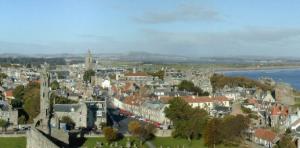Speaker - Will Aitken - 'Folly'
Tue, Jul 10th 2018 at 7:00 pm - 8:30 pm

Club member Will Aitken illuminated his audience on the subject following what he considered a relatively extensive investigation prompted by coming across many examples on outings with his rambling club.
Structures which had little useful function or practical value but were merely ornaments became popular from the 16th to 18th centuries. They became known as “follies”, taken from the French “folie”, which translates as “foolishness”.
There are still 1700 surviving eccentric follies in the UK, ranging from towers, fake castles, village or ruins, pagodas, temples and other oddities.
One of the largest still intact is a 10-storey pagoda built in London’s Kew Gardens in 1762.
Peterson’s Tower in Hampshire is unique in that it was the first-ever concrete structure in the UK.
Perhaps the most odd is a network of tunnels constructed beneath the Duke of Portland’s Northamptonshire estate. It led to the Duke being know thereafter as “the Burrowing Duke”.
An example which became very well-known is the village of Portmerion in Wales, which was the setting for the hugely-popular TV series “The Prisoner”. Its owner was industrialist Sir Clough William-Ellis, who based the village’s design on the Italian village of Portofino.
Many follies were in fact built at the instigation of philanthropic landowners as a means of helping local people who were victims of economic hardship. Often lengthy and complicated, such building projects ensured regular employment for those who needed it most. Such structures became known as “Famine Follies”.
Others such as The Pineapple which sits alongside the M74 near Hamilton, was built by the Earl of Dunmore in 1761 for a specific purpose, namely as a hothouse in which pineapples would flourish. It was never used for that purpose.
McCaig’s Tower which overlooks Oban cost some £500 (some £500,000 in modern terms) when built between 1897 and 1902 and was in reality to provide work for local stonemasons. After McCaig’sdeath, work was suspended and the project never completed.
Using a variety of slides and video footage, Will was able to show many of the follies in question – including one which he referred to as an “overseas folly” – Trump Tower in New York!
He concluded with amazing aerial shots of the Wainhouse Tower, built in the late 19th century in Halifax, Yorkshire as a dyeworks chimney. At an impressive height of 253 feet it is a dominating presence in the area but was never used as a chimney. The story goes that the remains of Wainhouse were buried at the very apex of the tower.
In a vote of thanks David Sandford expressed astonishment at the large number of follies which have survived. He said it was a testament to the skills of the stonemasons involved – and also to the generosity of landowners who provided jobs.
'What We Do' Main Pages:

.jpg)


